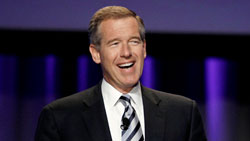The Supreme Court of the United States of America is one of the three branches of government. There are eight associate justices and one chief justice. The Supreme Court has been in existence since the Judiciary Act of 1789. It became an official organization in February of 1790. Their two primary duties are to interrupt the Constitution and settle disputes between states.
The Supreme Court was established from Article III of the Constitution. This branch’s objective was unknown at first, aside from keeping a legal check on the other two branches of government. The Supreme Court gained its power in the landmark case Marbury v. Madison. This case was about how James Madison attempted to stop last minute appointments by outgoing President John Adams. William Marbury was appointed by Adams and Congress right before Thomas Jefferson was to take over as President. James Madison saw this as unconstitutional. At the conclusion of the case, the Supreme Court ruled four to zero saying that Marbury should be granted his position but it was not up to the Court to force Madison to give it to him. This case was historic because it gave the Court the power to overrule an act of Congress based on the Constitution.
A case can end up before the Supreme Court in two ways. It is either through original jurisdiction or appellate jurisdiction. Original jurisdiction means that the Supreme Court is the only court to hear the case. Appellate jurisdiction means the Supreme Court is hearing a case once heard by a lower court and can either affirm or overturn a decision made by the lower court. In order for a case to be appealed to the Supreme Court, the appealing attorney must file a writ of certiorari. This is a formal request to the Court for the case to be heard.
According to supremecourt. gov, there are approximately 7,000 cases that are petitioned but only 100 to 150 are actually brought before the Court. This petition can only be filed after a case has gone through the U.S. Circuit of Appeals or as been heard by a state supreme court and has something to do with the Constitution. Once a case is heard and decided upon., the justices responsible for the case do one of two things. They either affirm the decision or dissent it. Following the decision being made, the Court releases a written statement authored by one of the justices in the majority stating the reasoning behind the decision. The dissenting side can also write a statement explaining their side. Some justices even write conflicting opinions based on various reasons.
Becoming a justice on the Supreme Court is no easy task. First someone must be appointed by the President of the United States. Following the appointment, the Justice must be approved by the Senate. The Senate questions the appointed on anything in their past and what they hope to do as part of the Court. This part is often very messy and politically fueled.
As mentioned, the Court is made up of eight associate justices and one chief justice. The Chief Justice is John Roberts Jr. The eight associate justices are Antonin Scalia, Anthony Kennedy, Clarence Thomas, Ruth Ginsburg, Stephen Breyer, Samuel Alito, Sonia Sotomayor and Elena Kagan. According to their voting records during cases, there are five “conservative” minded justices while there are four “liberal” minded justices. While serving as justice of the Supreme Court, justices are expected to be neutral on matters and use the Constitution as their guide to what is best for the majority.
Today the Supreme Court has gone through some drastic changes. In the last 20 years, the Court has seen its first woman justice, first Latino justice and first African American justice. The first woman ever was Sandra Day O’Connor who recently retired. Since her appointment there are now three female justices. The first Latino justice is Sonia Sotomayor. She is a voice that advocates for minorities and fair treatment. The first African American justice is Clarence Thomas. He has been serving on the Court since 1991 and continues to be voice to reckon with.
Most people wonder “What does the Supreme Court have to do with me?” Well decisions that are made by the Supreme Court affect lives every day. Because of the Supreme Court, Brown v. Board of Education allowed for the desegregation of public schools. It is also because of the Supreme Court that when a person is arrested for a crime they are read their Miranda rights. This is because of the case, Miranda v. Arizona and makes sure that proper procedure is followed during an arrest.
Dr. Michelle Grillo of the Criminal Justice Department sees how these types of decisions affect not only the legal side of issues but the criminal side. “The U.S. Supreme Court decides on Constitutional issues, specifically those that violate the Bill of Rights. Many cases are a result of law enforcement investigations relating to searches and seizures of evidence in criminal cases. An excellent example would be the recent decision by the Court in United States v. Jones, decided January 23, 2012. In this case, the federal government obtain a warrant to place a GPA tracking device on the car of Jone’s wife. The warrant stated that the GPS device be installed within 10 days in Washington, D.C. However, the device was installed on the 11th day. Jones was subsequently tracked for 28 days and an indictment issued on drug trafficking charges. The Circuit Court suppressed the evidence obtained while the car was parked at Jones’ home. However, the Circuit Court did not suppress the evidence gathered while Jones was traveling arguing that there was no reasonable expectation of privacy on public streets.
Some critics of the Court believe in the stance “Do not legislate from the Bench.” This criticism is saying that laws should not take effect just because of the decision of the Court; creating laws is the legislation’s job.
For every case that has set a precedent and changed the country for the better, there are cases and decisions that spark controversy. One of the most controversial is Roe v. Wade. This case and decision allowed for abortion to be legal in the United States until the second and third trimester. This case is the foundation for the “pro-choice” and “pro-life” debate. Roe v. Wade is still debated on whether the Court made the correct decision and many are trying to overturn this decision.
Another controversial decision was Citizens United v. Federal Election Commission. In this decision, corporations were given the same rights as a regular American citizen when it comes to political donations. This case is what allows for the “Super PAC” and can lead to untraceable money during a political election. The Court’s majority belief is that by not allowing corporations and those involved with them to speak, it was violating the First Amendment. Justice Stevens, who disagreed with the majority and has since retired, stated, “Corporations have no consciences, no beliefs, no thoughts, they are not themselves members of, We the People, by whom and for whom our Constitution was established.” Professor Gregory Bordelon, Lecturer of Law at the University, would say this was the most influential case during the most recent term stating, “It has had drastic effects on this upcoming election and has changed the way campaigns are run.”
The Supreme Court hears cases in terms. These terms begin every October and continue until the following year in September. This term will hear 87 cases. One of well-known cases will be whether the national health care bill commonly known as “Obamacare”, will become law. The main part of this bill being debated for constitutionality is whether a federal mandate is constitutional. This would force health care upon the people. Republicans argue that this mandate is not constitutional because it is forcing a good or service on the American people. Democrats including President Obama believe this will help lower the costs of health care especially in a struggling economy. Boredelon said this case will change the Supreme Court because, “This was a circuit split and this legislation was a major accomplishment for the Obama administration.” Another case that Boredelon recommends keeping an eye on is United States v. Xavier Alvarez. It is about the military veteran, Alvarez, who lied about his honors while serving.
As college students, decisions made now effect our tomorrow Sidney Goldstein, a senior said, “It is imperative that we follow their deciiosn. After all, the Supreme Court has the power to rule our day to day activities. By not following their actions we may end up giving up personal right s we do not want to lose.” Paying attention to these decisions is a duty as American citizens. Boredelon echoes this by saying, “ As a professor and law advisor, I can only hope to spark an interest so you will go out and research issues like this.” College students should be especially concerned because one day the country becomes an immediate issue. Being knowledgeable on things such as the Supreme Court and their decisions can avoid things such as constitutionally protected rights from being violated.
PHOTO COURTESY of supremecourt.gov




